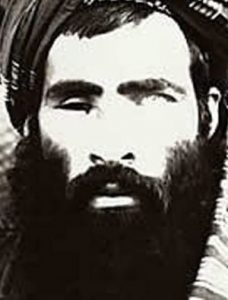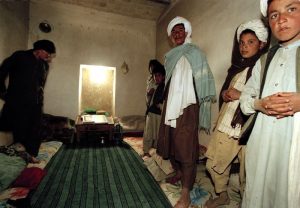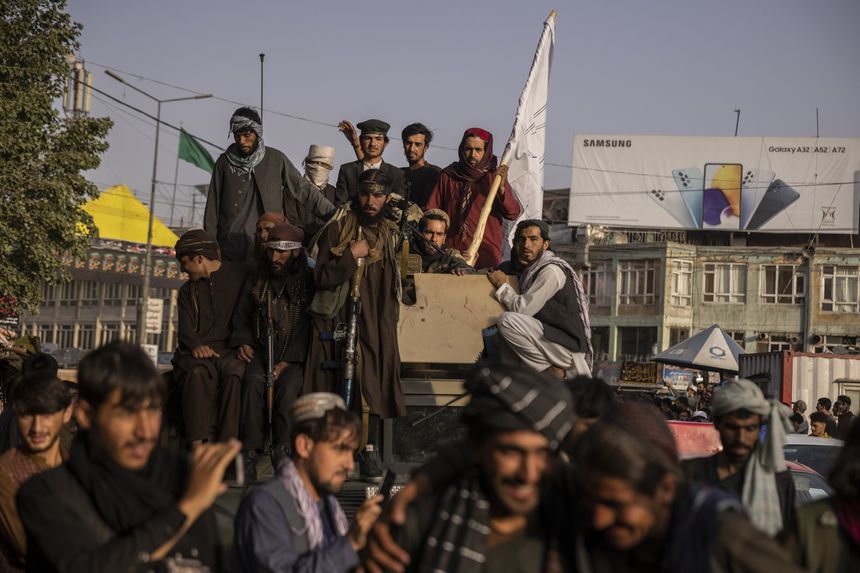The Taliban, a fundamentalist Islamic force that ruled Afghanistan from 1996 until being toppled by U.S. forces in 2001, entered the Afghan capital Kabul on Sunday after sweeping through much of the country in recent days following a withdrawal of U.S. troops. The group that sheltered Osama bin Laden as he planned Sept. 11, 2001, terrorist attacks on America is now consolidating control over the country as they end two decades of fighting in Afghanistan.
Who are the Taliban?

The Taliban were founded in southern Afghanistan by Mullah Mohammad Omar, a member of the Pashtun tribe who became a mujahedeen commander that helped push the Soviets out of the country in 1989. In 1994, Mullah Omar formed the group in Kandahar with about 50 followers who rose up to challenge the instability, corruption and crime that consumed Afghanistan during the post-Soviet-era civil war.
The Taliban, whose name means “students”—a reference to the founding members having studied under Mullah Omar—quickly captured Kandahar and seized the capital, Kabul, in 1996 as Afghans grew disenchanted with the country’s insecurity. The Taliban swiftly imposed strict Islamic rules that banned television and music, barred girls from going to school and forced women to wear head-to-toe coverings called burqas. The Taliban provided bin Laden with sanctuary while he planned the Sept. 11 terrorist attacks.
When the Taliban refused U.S. demands that they hand over bin Laden, American forces invaded Afghanistan and quickly toppled Mullah Omar’s government. Mullah Omar and other Taliban leaders found sanctuary in neighbouring Pakistan while they mounted an insurgent campaign to regain power in Afghanistan. In February 2020, the U.S. and the Taliban signed a historic deal that laid out a 14-month timetable for America to withdraw all of its forces from Afghanistan. In the interim, talks between the Taliban and Afghan government meant to end the war gained little traction.
What are the Taliban fighting for?
The Taliban aim to reimpose their strict version of Islam across Afghanistan. Taliban leaders say they want to create an inclusive government that won’t be a threat to the West, but the group has reimposed its harsh rule in parts of the country where it secured control earlier in the conflict.
The Taliban have also said that Afghans have nothing to fear from their rule and that they would grant amnesty to those who have worked for the government. But Afghans who fled Taliban-held areas, or lived under the insurgents’ control say they have witnessed unprovoked attacks on civilians, women being sent home from work at gunpoint, and executions of captured soldiers.
Who leads the Taliban in Who leads the Taliban in Afghanistan?
Mullah Omar died in 2013, although the Taliban didn’t announce his death until 2015.



In 2016, a U.S. drone strike in Pakistan killed Mullah Omar’s successor, Mullah Akhtar Mohmmad Mansour. Since then, the group has been led by Mawlawi Haibatullah Akhundzada, a Pashtun from Kandahar who once led the group’s Islamic courts. The Taliban have a council of leaders based in Pakistan, known as the Quetta Shura, that guides the group’s decisions. The public face of the group is the head of its political wing, Mullah Abdul Ghani Baradar, who led talks with the U.S. to end America’s involvement in the 20-year war.
How do the Taliban make money?
The Taliban rely heavily on Afghanistan’s illegal drug trade for funding. The group imposes taxes on poppy growers and heroin producers working in the areas of Afghanistan it controls. The Taliban also impose taxes on businesses, profit from fuel trade in border areas under their influence and operate illegal mines in the country. The group receives outside funding from supporters in Pakistan and the Gulf. North Atlantic Treaty Organization researchers estimate that the Taliban raise as much as $1.6 billion a year.
What is at stake as U.S. forces withdraw from Afghanistan?
The U.S. spent trillions of dollars trying to stabilize Afghanistan and prevent it from becoming a new sanctuary for groups like al Qaeda or Islamic State that could plan attacks against the U.S. and its allies. The quick collapse of the U.S.-backed Afghan government is a moral and political blow to Western influence and interests in the region, where Pakistan, China, India and Russia are all jostling for strategic advantages. While the Taliban have pledged to prevent extremist groups from finding sanctuary in Afghanistan, Western officials worry that the group won’t live up to its commitments, and say hundreds of al Qaeda members already live in areas under Taliban control.
What does this mean for the future of Afghanistan?



Taliban forces capitalized on the U.S. military withdrawal to swiftly seize swaths of the country. An agreement between the Trump administration and the Taliban in February 2020, which involved drawing down American troops without the consent of the Afghan government, emboldened the Taliban. President Biden’s decision this year to withdraw all troops unconditionally by September further emboldened the Taliban to push their offensive, which as it gathered speed sapped morale among government security forces. Nine days after the Taliban captured their first provincial capital, the Islamist group entered
Kabul, completing its takeover of the entire country after President Ashraf Ghani left.
The Taliban said it had issued orders to its fighters to not enter homes without owners’ permission and that the shape of the new government would soon be announced. A spokesman, Mohammad Naeem, told the Al Jazeera television channel that the group wants peaceful relations with other countries.
Thousands of Afghans, however, swarmed the airport in Kabul, desperately trying to find a way out of the country on military transport planes or the last few commercial flights.
What does Taliban rule mean for women?
The return of the Taliban threatens to upturn everyday lives. Women and girls who have had access to education and the right to work over the past 20 years are now facing up to a more repressive era in which headscarves will be required, and there are questions over what kind of public role they will be allowed. Female journalists and others have reported that the Taliban have gone door to door taking note of their addresses. In some areas where the Taliban seized power earlier in the conflict, people who fled said Taliban commanders demanded that villagers hand over unmarried women to become “wives” for their fighters.
*This article originally appeared on The World Street Journal.



Leave a Reply